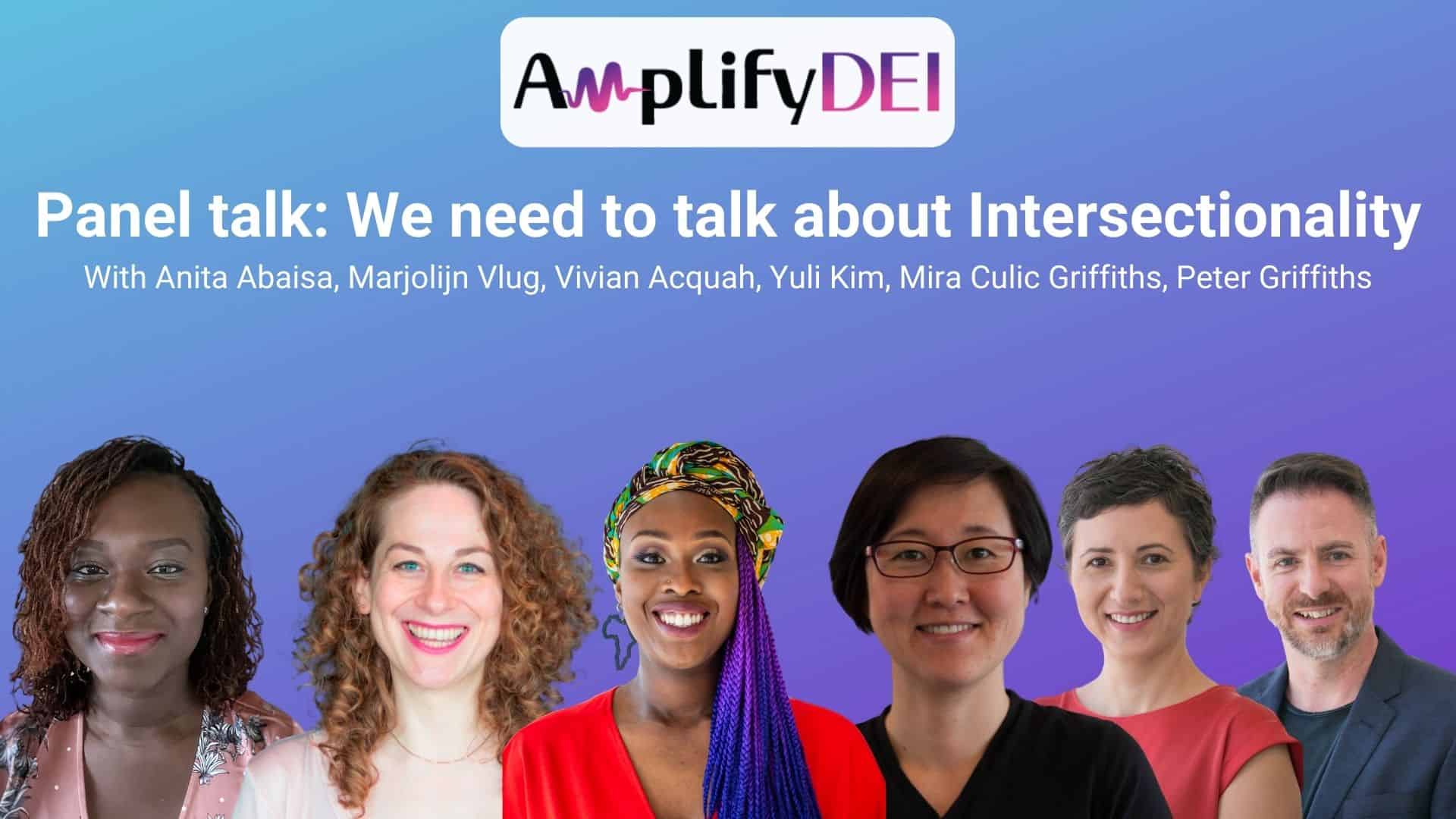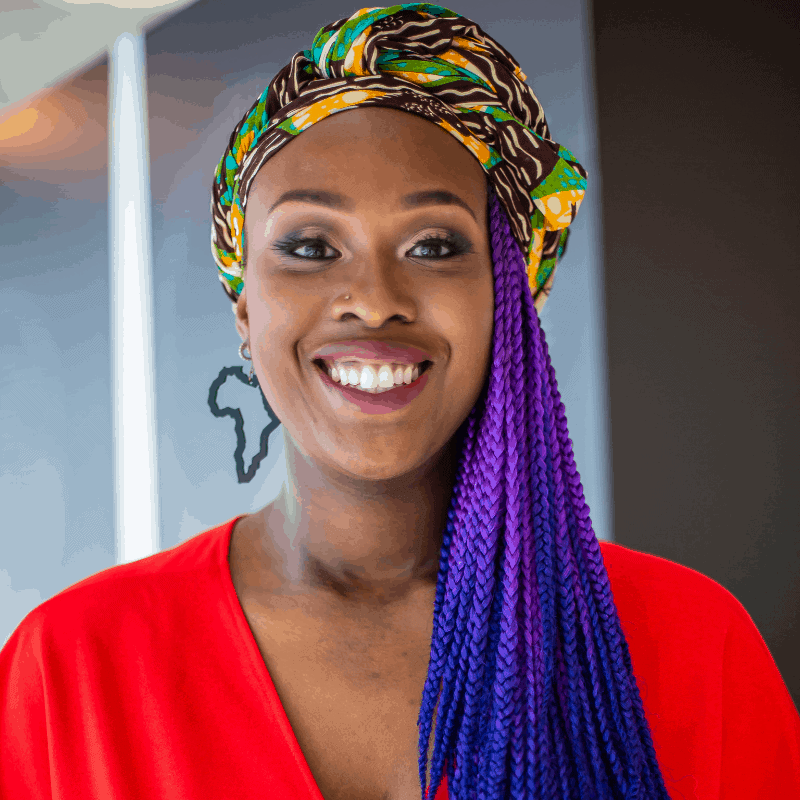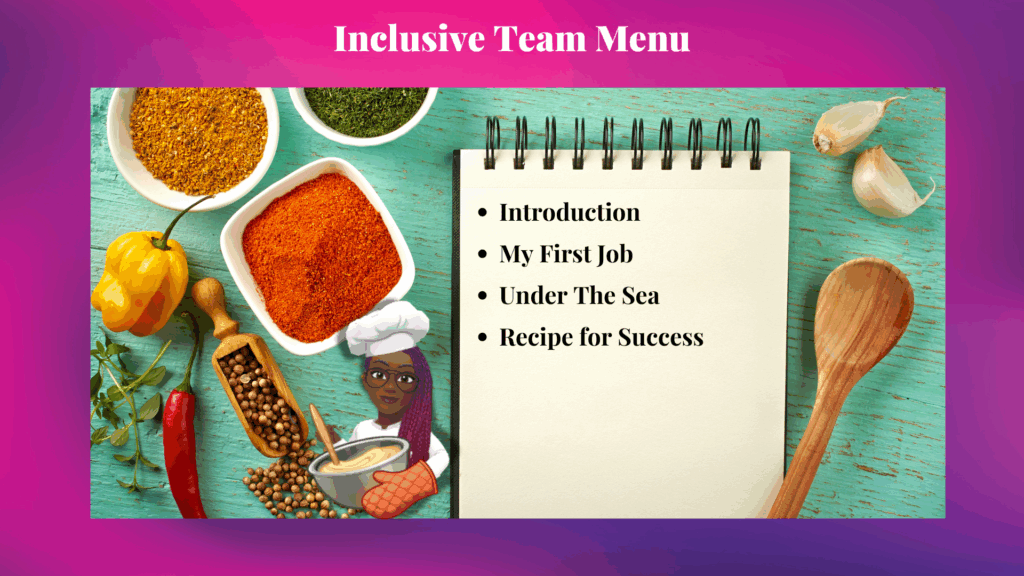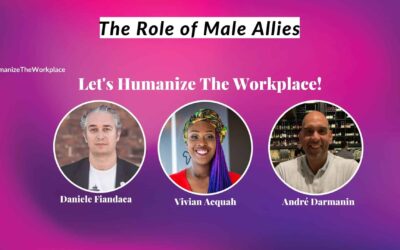We can’t get very far in conversations about diversity, equity, and inclusion without talking about intersectionality. It’s a natural part of the conversation, and the lived experiences of each of us. So, we sat down with some panel experts to discuss intersectionality and how leaders should think about it, and how understanding and considering intersectionality will make a difference in our workplaces.
Disclosure: This post contains affiliate links. If you click through and make a purchase, I’ll earn a commission at no additional cost to you.
The panel talk: “We need to talk about Intersectionality,” is part of the Amplify DEI Summit that was held in September 2021. At Amplify DEI, we are daring to imagine a world where Diversity, Equity, and Inclusion (DEI) are at the forefront in the workplace.
And, as mentioned, intersectionality needs to be a key part of these conversations.
Panelists for this discussion include:
- Marjolijn Vlug, Career and Allyship Coach;
- Yuli Kim, Learning and Development Program Manager;
- Peter Griffiths, Leadership Coach & Creativity Catalyst;
- Mira Culic Griffiths, Leadership Coach;
- Anita Abaisa, Upgrader of Socio-Economic Positions at IBIAS VR.
Vivian Acquah, Inclusive Workplace Wellness Advocate, moderated the conversation.
We’ll look first at what intersectionality is and then dive into why keeping intersectionality as a priority can transform a workplace. Listen to or watch the conversation via the Youtube video below.
What is Intersectionality?
Intersectionality may be a new term for some people, but there is a level of intuitiveness to it. It is, essentially, the different pieces that make up one person’s identity. Each of us has labels and roles that make us into who we are. This can include our sexual or gender identity, race and cultural background, family role (parent, child, sibling), careers or interests, and any other identity piece.
We each have these different pieces of who we are that intersect with each other to inform our lived experiences. And because each of us our different and unique, our intersections are as well, giving everyone a different way to operate in the world.
When we understand intersectionality, it becomes clear that we can’t put people into neat little boxes. Instead, as Vivian Acquah shared, “We need to unravel the different intersectionalities so that we understand what makes people tick. Where are their purposes? What makes them come to work? Where do they have fun? They are not just one identity.”
When we talk about intersectionality in the workplace, it is about embracing an employee and colleague with all of their different layers and complexities. It’s about getting to know who they truly are and creating a safe space to work and live as their authentic selves.
“Every person that you see that you meet, that you interact with, is a patchwork of their identity. You can connect with some pieces, and maybe other pieces are so different that you find it very alienating to even try. But you can try. It’s not the easiest way to connect. But everyone is it is a patchwork. [Everyone] is a kaleidoscope of elements.” –Marjolijn Vlug
Intersectionality will unlock human potential
Intersectionality is important for many reasons. Panelist Yuli Kim shared that, for her, a focus on intersectionality in the workplace is about unlocking human potential. As you get to know people in your workplace and know who they truly are, you start to find commonalities. Instead of focusing on what might be a visible difference, you can see the whole person and start at a point of shared humanity and what you have in common.
When you start from this point of finding things in common, employees feel safe and comfortable to be themselves and show up at work with energy, engagement, innovation, and commitment. Allowing people to be who they are will unlock their potential and positively impact a workplace.
Intersectionality is a personal commitment
Leaders who want to start focusing on embracing intersectionality need to understand that it starts with a personal commitment. Leaders need to be able to listen to their employees—not listen to respond but listen to understand.
Panelist Peter Griffiths encourages leaders to start from a simple place of checking in with each employee. He says, “It doesn’t require anything massive, just checking in and saying, ‘how are you?’ And especially in the world of remote and hybrid working—the more you check-in and just say, ‘look, forget work for a bit, forget the stats, forget the KPIs—how are you doing?’ And then just shut up.”
Listening to understand creates a safe psychological environment for employees. So, too, does a leader’s commitment to follow through on their promises. Our panelists were in agreement that it is of the utmost importance for a leader to honor their commitments and follow-through on them. This goes for personal commitments from an individual leader, but also company-wide. So, for example, if a company is promoting themselves as diverse and inclusive, but that is not the reality, employees will see right through it and know they can’t trust those leaders.
Intersectionality can help with employee retention
There is a practical side to focusing on intersectionality. For example, we know that creating safe environments for employees is key to them staying in a job. Nobody wants to work somewhere they are not accepted, understood, and embraced!
Vivian Acquah brought up a study done by Indeed that looked at diverse hires and showed that people were leaving their jobs after just a year. Further, the panelists discussed how so many companies are losing employees and struggling to find replacements.
The panelists were in agreement that workplaces would do well to focus on why people are leaving. There is currently a heavy emphasis on hiring a diverse workforce, but less about the retention of those employees once they are hired. In Anita Abaisa’s words, “There are companies that are so busy with ‘I have to get you in,’ because then they can check the boxes and say I am a diverse company.”
In that initial hiring period, the first 90 days or so, there is an opportunity to really get to know your new employee and make sure they feel comfortable and welcomed. It’s important to stay engaged with them early before they make the decision to leave. But, in the event that staff starts leaving, there is also an opportunity in the off-boarding process to find out why and then make adjustments accordingly.
Intersectionality is about continual learning
Another theme that came up in this panel conversation is that intersectionality is all about continual learning. You’ve never “arrived.” Some companies have certainly taken important strides in creating more accepting and diverse workplaces, but some will stop at where they are.
Oftentimes, diversity is siloed into categories like sexual orientation, gender identity, race, etc. As a result, companies might work towards inclusion of one of these groups while not realizing there is more intersectionality there.
Marjolijn Vlug put it this way: “That’s the whole thing about intersectionality is that there’s so much more to people than just that one fix that you’ve already done.”
Every leader can also embrace the idea of continual learning. We can always become more aware of our own biases and where we need to become more aware.
Mira Culic Griffiths shared, “Our brains like labels because it’s easier… But when it comes to humans, it’s not useful.” So we need to continually have that intention to become more and more aware of our biases.
Practical Steps for Leaders
Sometimes the conversation around intersectionality—or DEI in general—can feel theoretical or abstract. As a result, it can be hard to know exactly how to apply some of these ideas or ideals in the workplace. Luckily, the panelists had some excellent advice for leaders to prioritize and focus on intersectionality in the workplace. Here are some of their tips:
- Listen to learn, not to respond.
- Use the first 90 days of someone’s employment to get to know them and ensure they feel welcomed, safe, and comfortable in the workplace.
- See off-boarding as a time to gain valuable information—why are employees leaving your company? Use exit interviews to glean information so you can make changes.
- Ask questions of your employees: Who are you? How safe do you feel right now? How can we support you? What were the ups and downs of your week?
- Use both qualitative and quantitative research to understand what is going on in your organization.
- Deliver on your promises to build trust and accountability.
Conclusion
Intersectionality is about understanding all the pieces of someone—what makes them uniquely them. This is an important piece of DEI because it reflects the reality we live in, where different aspects of each person’s identity impact their lives.
If leaders embrace and focus on intersectionality, they are able to really understand their employees, create a safe space, and tap into the human potential in their organization. But leaders need to be personally committed to this journey as it is ongoing and requires personal accountability.
Head over to Amplify DEI to learn how to take advantage of all these amazing resources to build towards inclusive workplaces!
Latest Posts
- 5 Essential Ingredients to Amplify Inclusive Leadership
- PRIDE in Practice: How and Why to Embrace Diversity, Equity, and Inclusion in the Workplace
- Let’s Talk About Racism In The Workplace Today
- Activate Inclusion From Within Your Comfort Zone With LinkedIn Now
- AI + Recruiting, The Good, The Bad & The Ugly With Maikel Groenewoud







